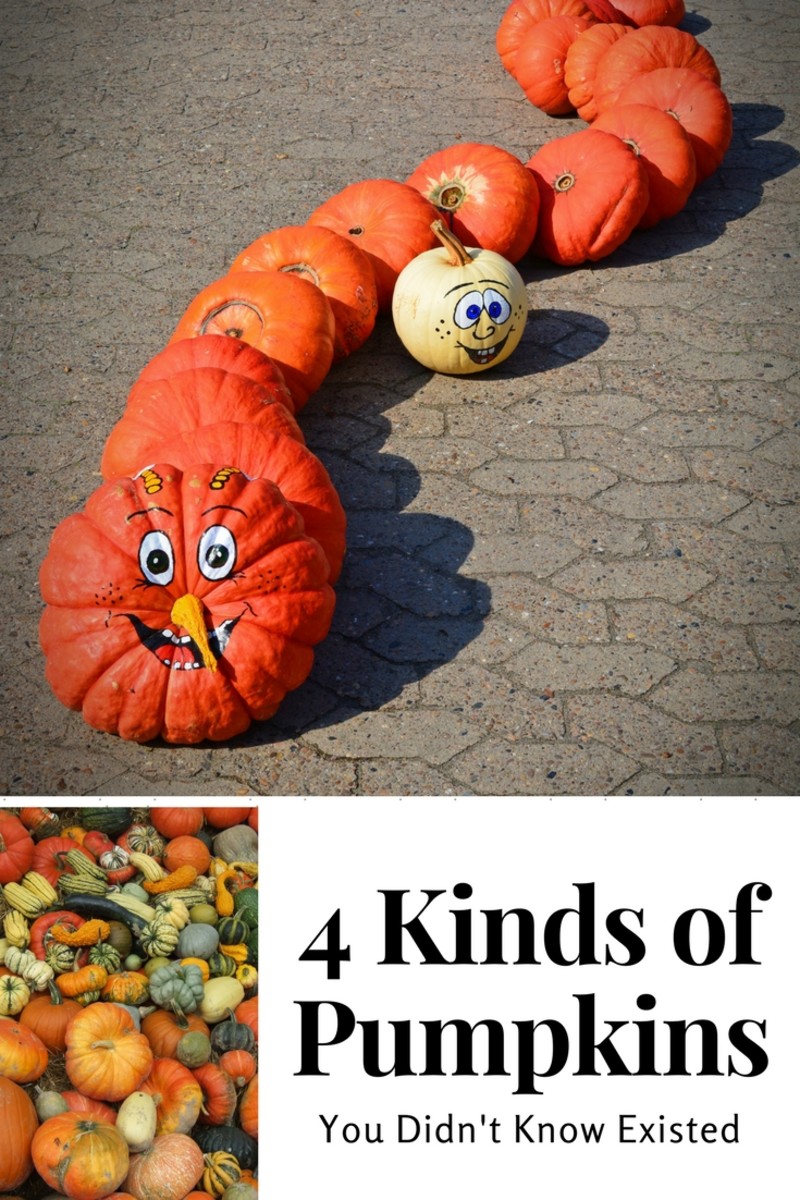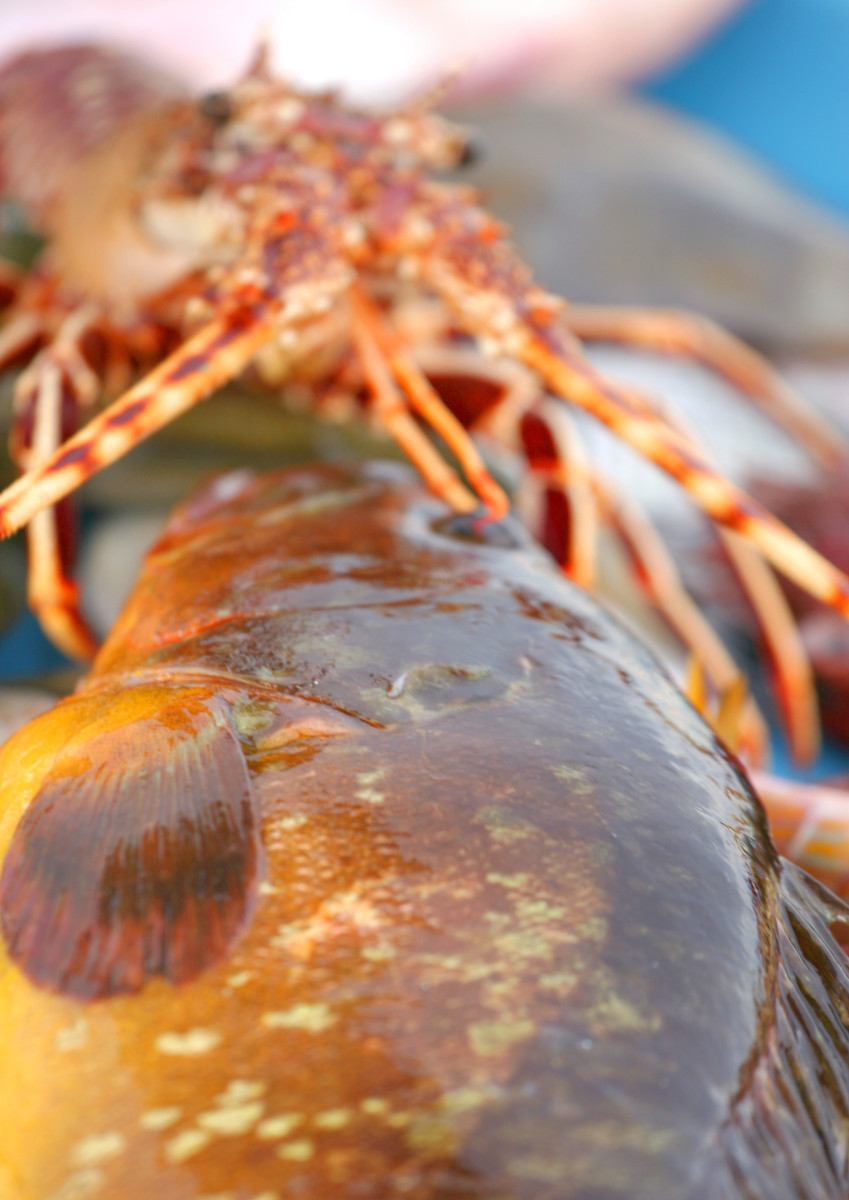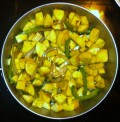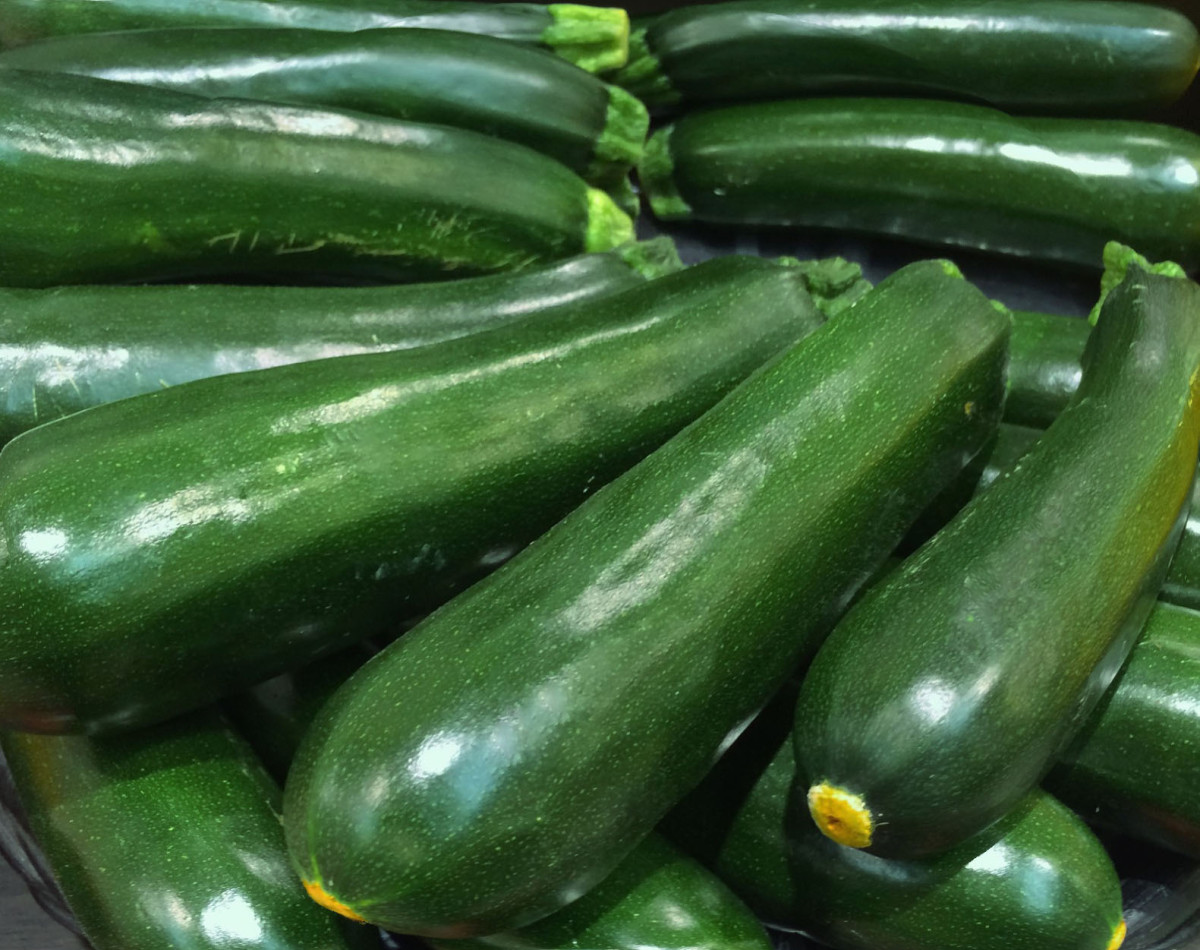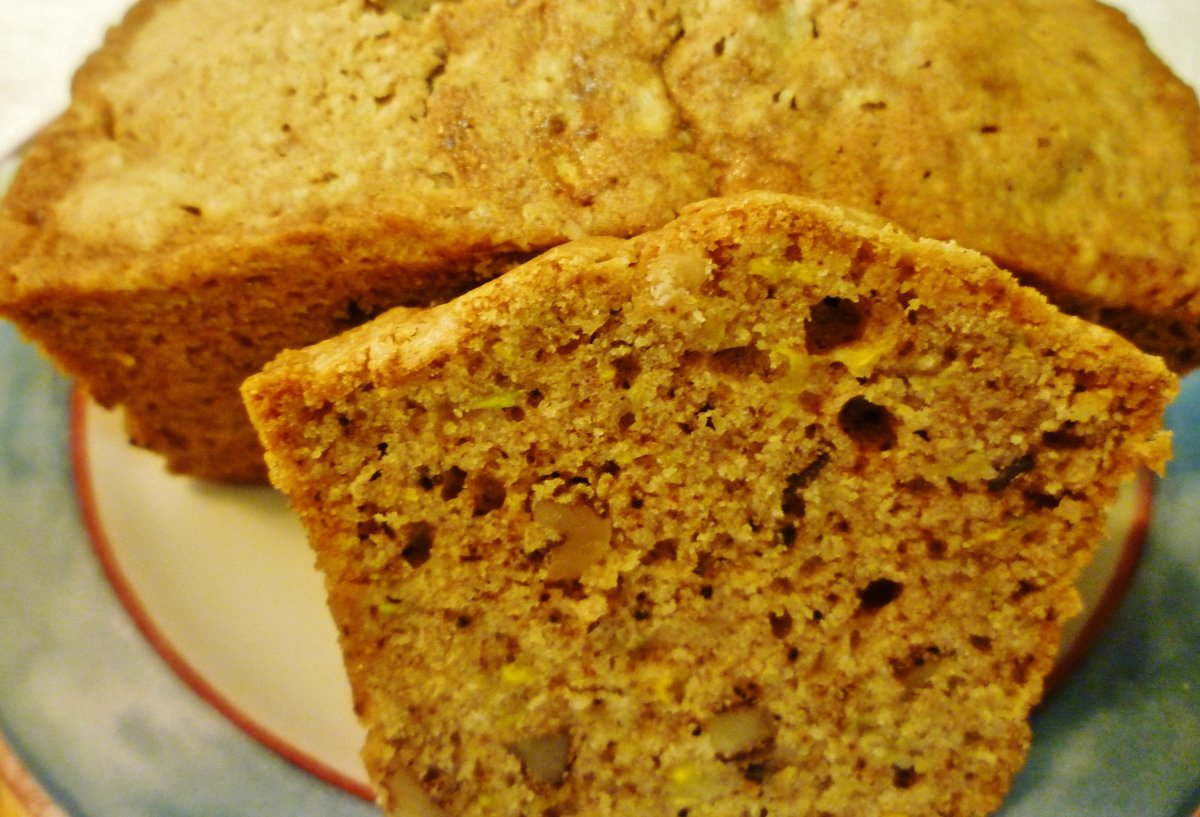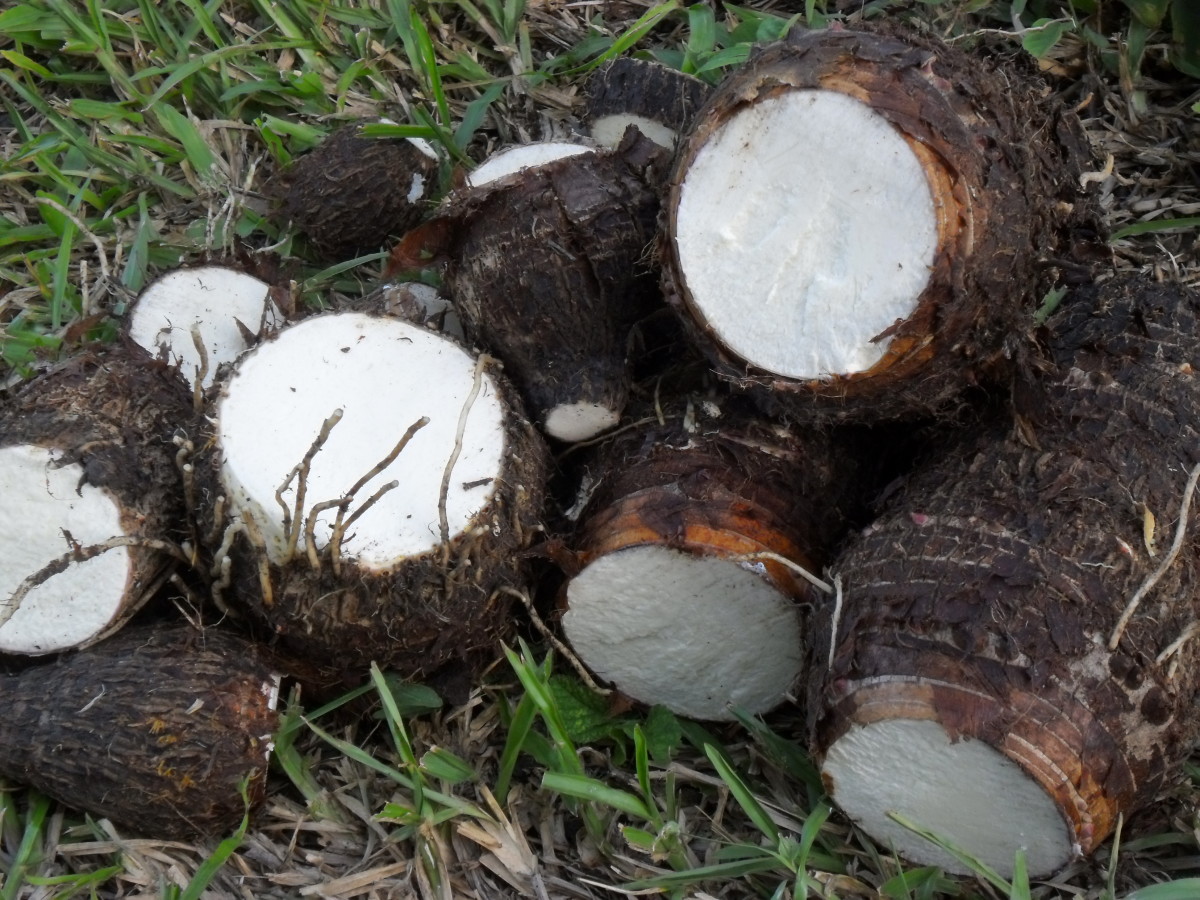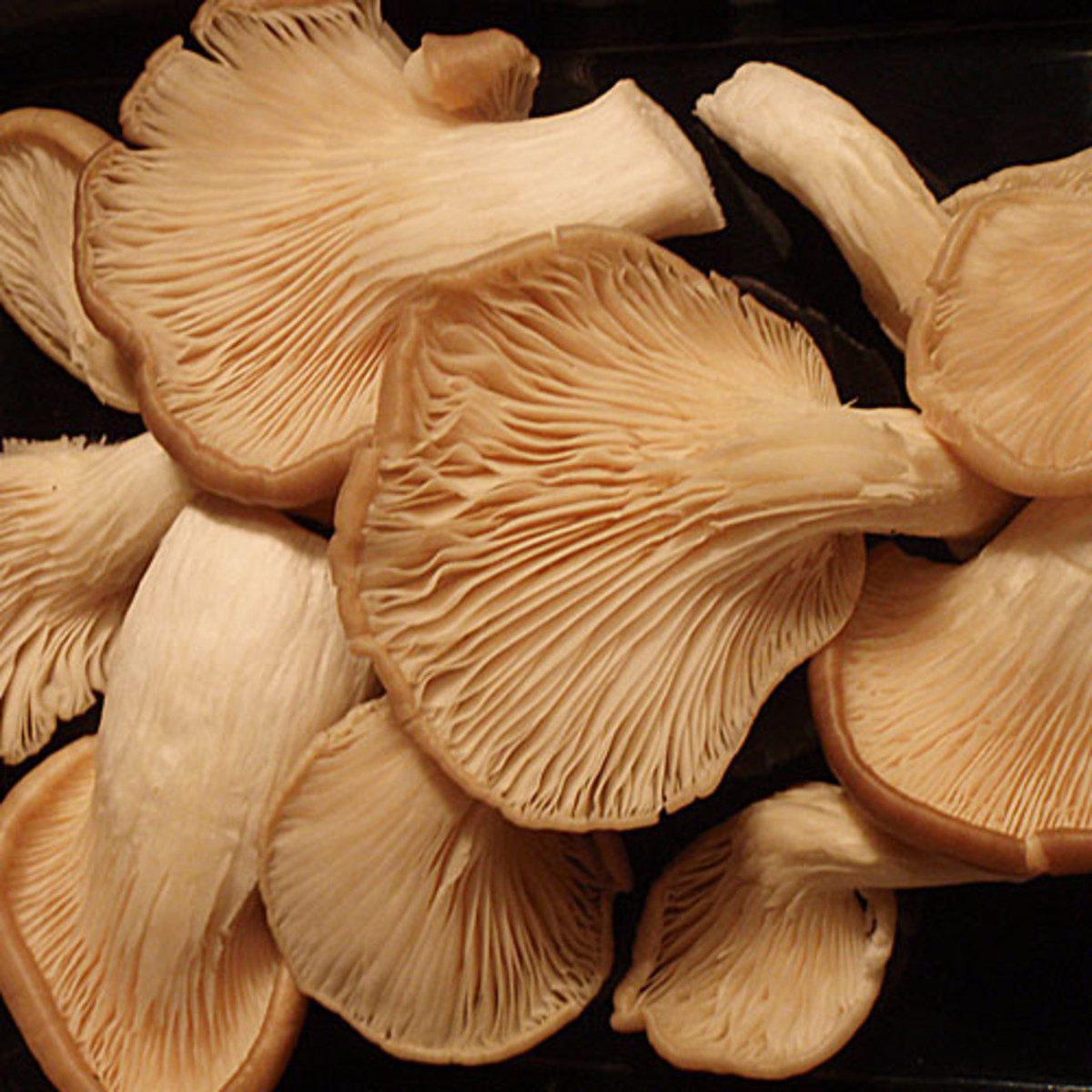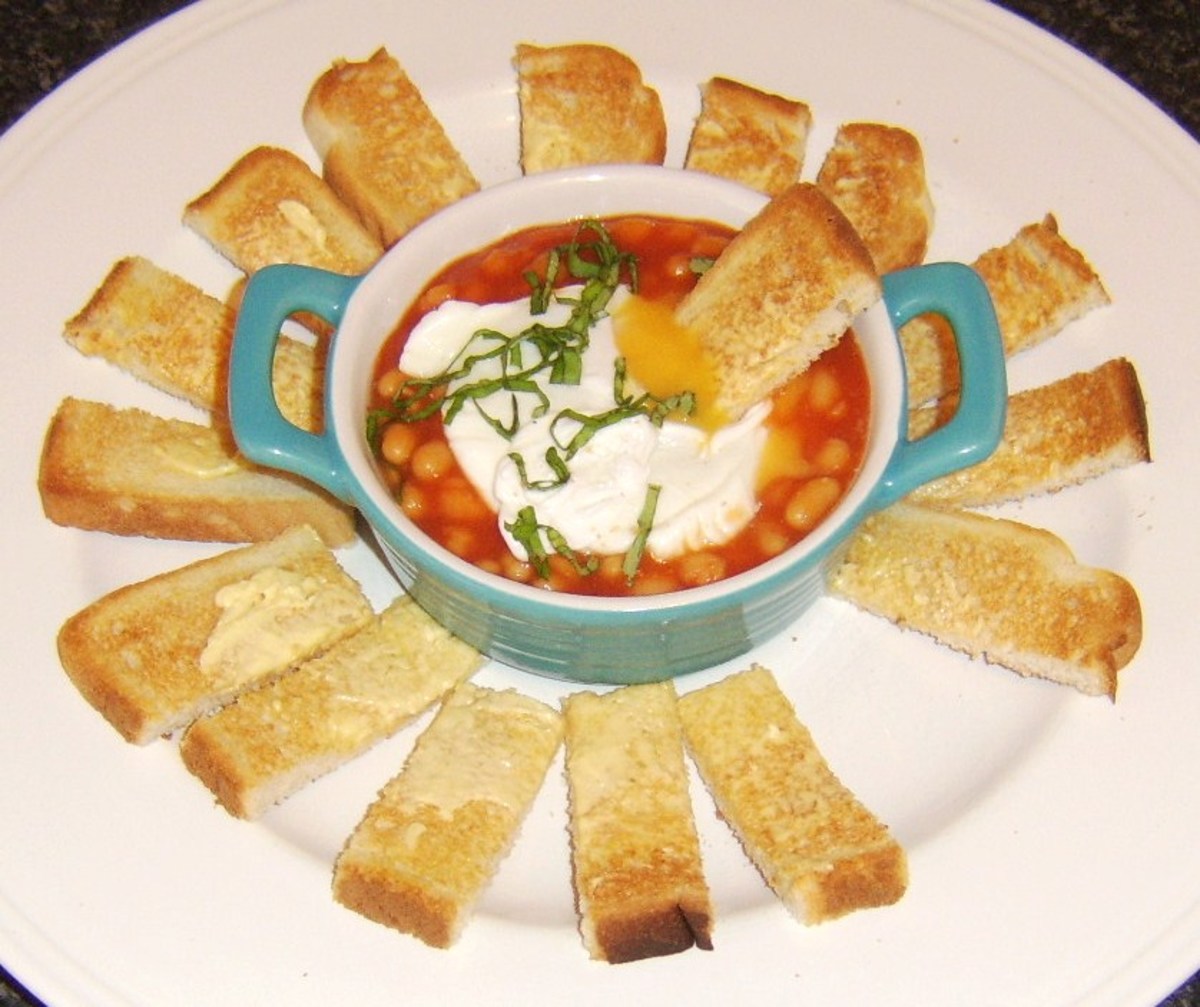A Cook's Guide to Summer Squashes
Squash is a versatile, tasty vegetable that’s available almost year round. In the spring and summer, summer squash is in the markets, and in the colder months, winter squash is available. In fact, some varieties of winter squash can be found the entire year.
Summer squash is harvested when the rinds are still soft. These types of squashes can’t be stored for long periods without refrigeration or freezing the way winter squashes can. Summer squash varieties include yellow crookneck, yellow straightneck, pattypan, and zucchini. These vegetables are good sources of lutein, beta carotene, magnesium, vitamin A, and vitamin C, at less than 40 calories per serving.
Summer Squash Varieties
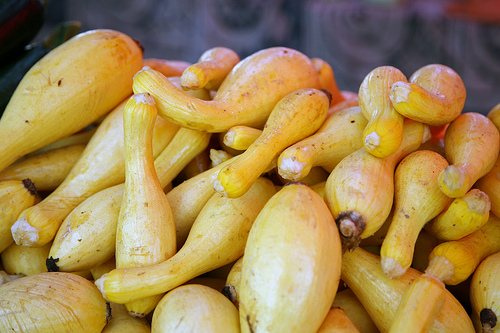
Yellow crookneck – This is the “old fashioned” type of squash with which most people are familiar. Choose small fruits, six inches long and smaller, that have not begun to darken to a golden shade. Remove the stem end and the flower end before cooking. Crookneck squash can be steamed, boiled, stir-fried, deep fried, grilled, sautéed, pureed into soups, or baked into casseroles. They’re also good raw in salads or with dips.
Some people will tell you that crookneck and straightneck are the same variety, but they're not. I've grown, eaten, and preserved MANY of both varieties, and they do have a couple of differences.
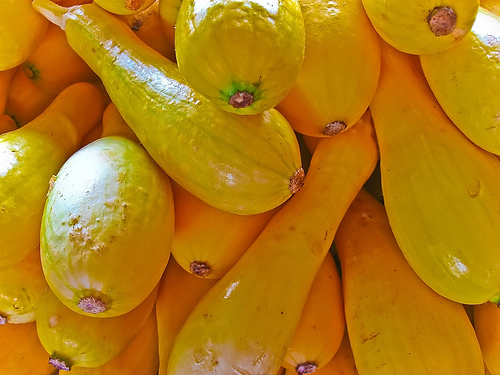
Yellow straightneck – These squash are similar in taste to the crookneck variety, but from my experience, their flavor is a little milder, and they don’t get hard as quickly as the crooknecks, so slightly larger fruits might still be good to eat. Very young fruits can be boiled or steamed whole. Yellow straignecks can also be cooked all the same ways in which crookneck squash is prepared.
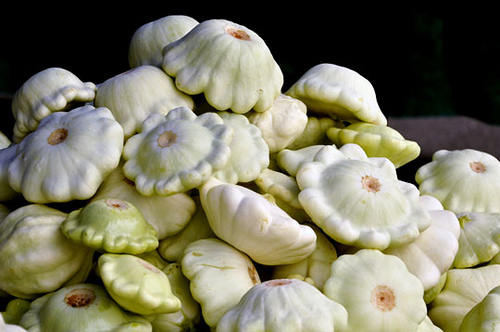
Pattypan – These are attractive round squash with scalloped edges, in either pale green or gold. They're similar in taste to straightneck and crookneck yellow squash, with a slightly nuttier flavor. Choose fruits that are four or less inches across. One of the best ways to cook these squash is to stuff them whole. They make their own little serving dish! The link to this recipe can be found below.
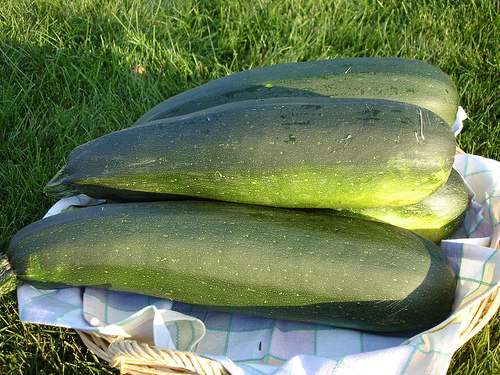
Zucchini – Zucchini is similar in taste and texture to other summer squashes, but it has a dinstinctive slightly peppery taste. These squash grow to enormous sizes, but don’t use the big ones for cooking – they’ll be tough and stringy. Choose fruits that are eight inches or less in length. Zucchini is good baked, deep fried, grilled, stir-fried, sautéed, and cooked in casseroles.
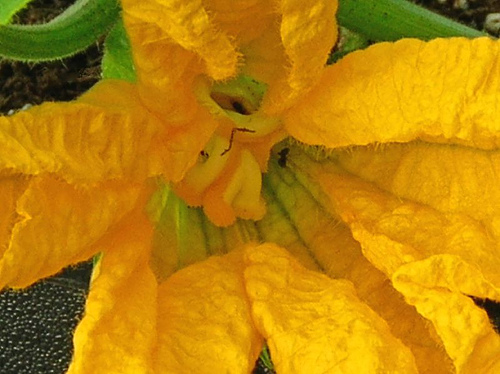
Squash blossoms – Yes, squash blossoms are edible, and in fact, they’re delicious! Just remove a fully opened bloom from the ends of the fruits and batter-fry them or add them to salads or stir-fries.
How to Select Summer Squash
With winter squash, you want fruits with thick skin and deep color. The opposite is true with summer squash. Individuals with golden color are often overripe. Choose yellow squash with a pale lemon shade and thin, glossy skin. Examine the fruits for bruises, blemishes, and insect infestation. Also, don’t go for those “state fair” size squash and zucchini! Think small, and follow the sizing guidelines above.
How to Store Summer Squash
Summer squash will keep in the refrigerator for up to 6 or 7 days. Don’t wash the squash or handle them any more than you have to. Place whole squash in a perforated plastic bags and store in the crisper section of the refrigerator.
To store for longer periods, you’ll need to freeze the squash. To do this, wash the squash first. Remove both ends and any blemishes. Slice the squash into ½-inch-thick slices. Drop into boiling water and cover with a lid. Blanch for four minutes. Remove pot from stove and pour contents into a colander. Run cold water over the squash until they’ve cooled completely. Place in plastic bags, remove excess air, and freeze. Properly frozen squash will keep for up to 12 months.
For some great summer squash recipes, click the links below!
Recipes for summer squash:
- Holle's Stuffed Pattypan Squash
Pattypan squash is a variety of summer squash with scalloped edges. It's a beautiful vegetable and is available in pale green or gold. The taste is very similar to that of yellow summer squash, and like... - Holle's Squash Casserole
It isn't Thanksgiving dinner at our house unless theres a yummy squash casserole on the table! Of course, we eat this dish at other times of the year, too. Sometimes I make it, and sometimes my...

